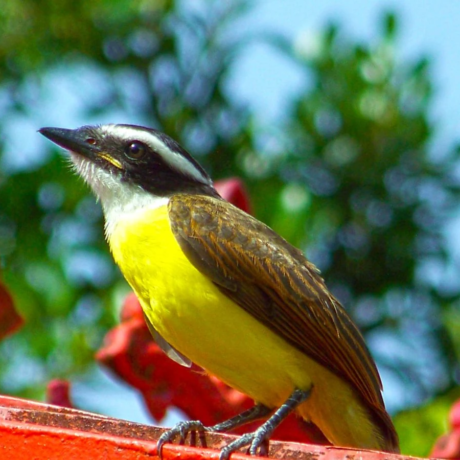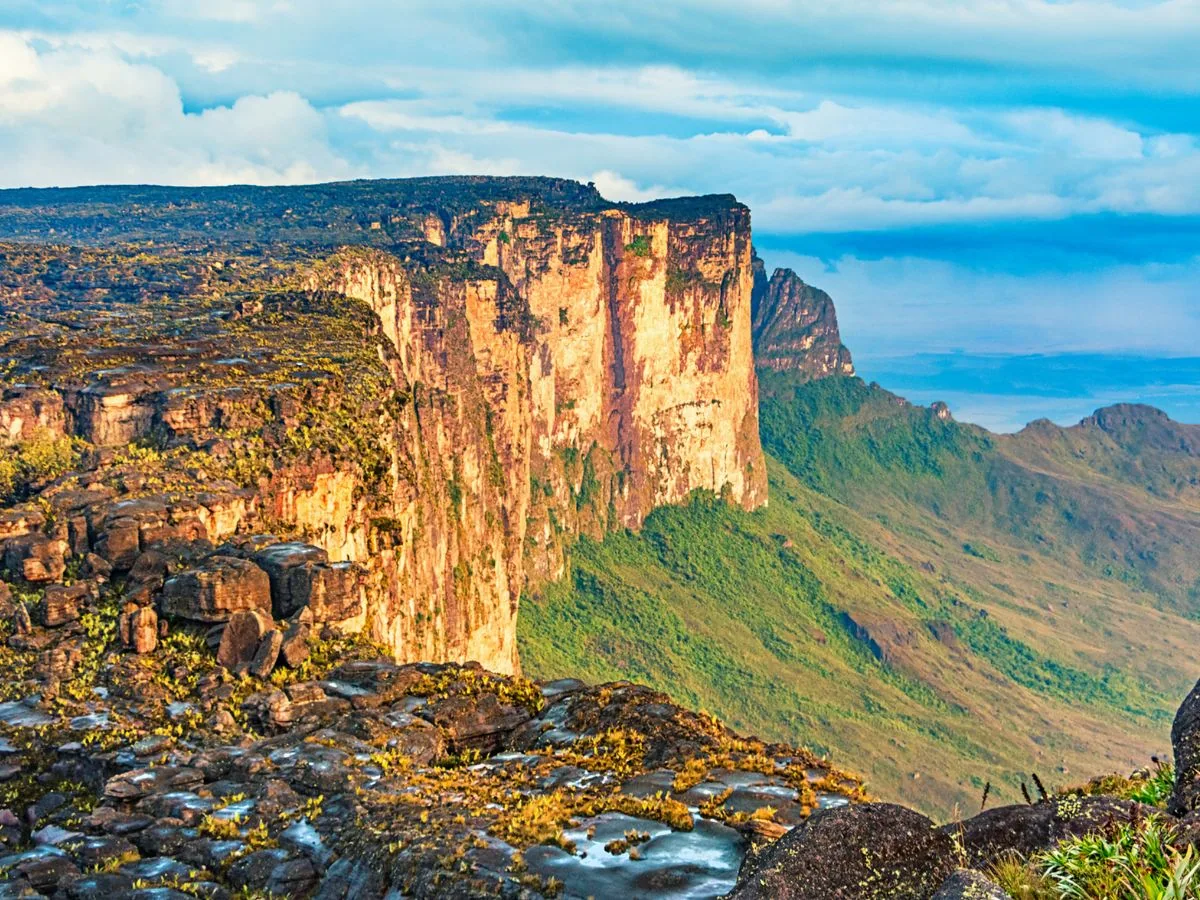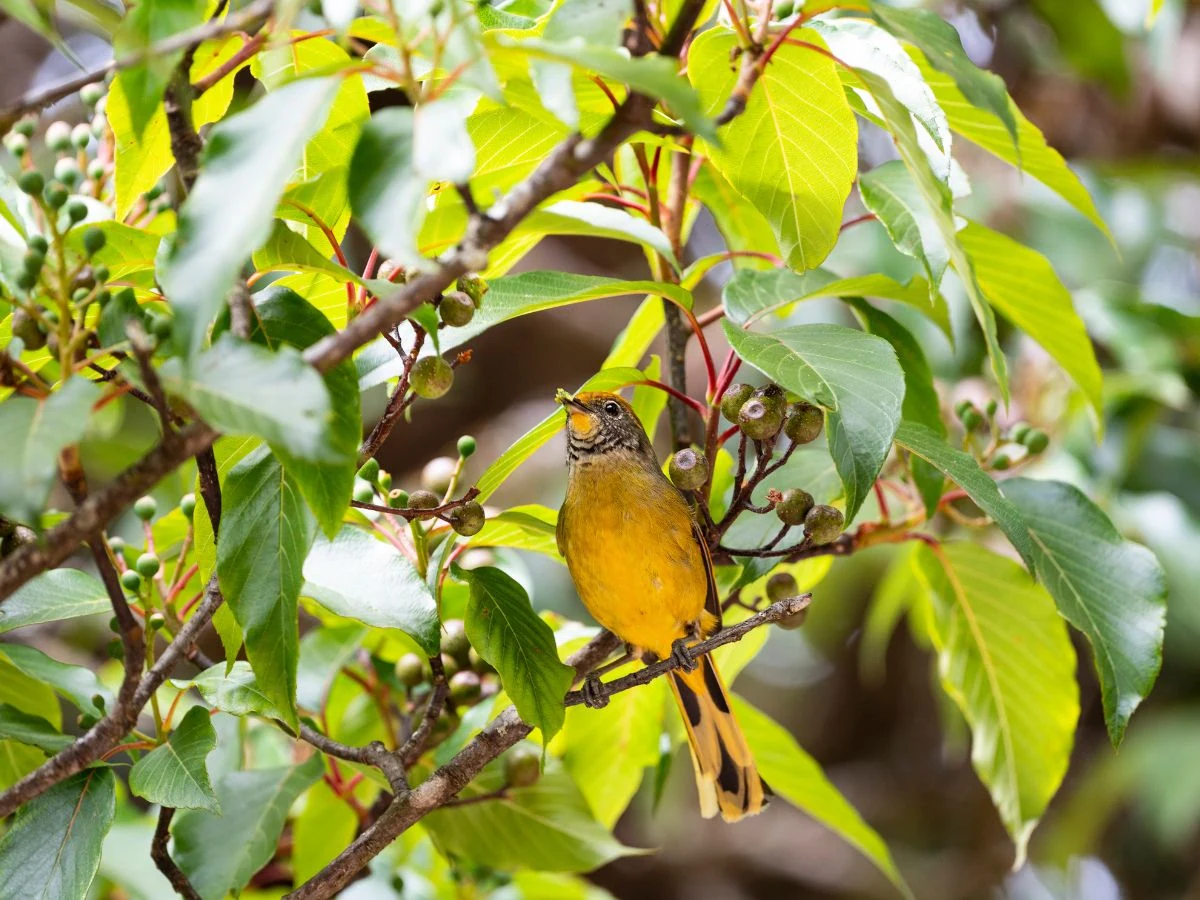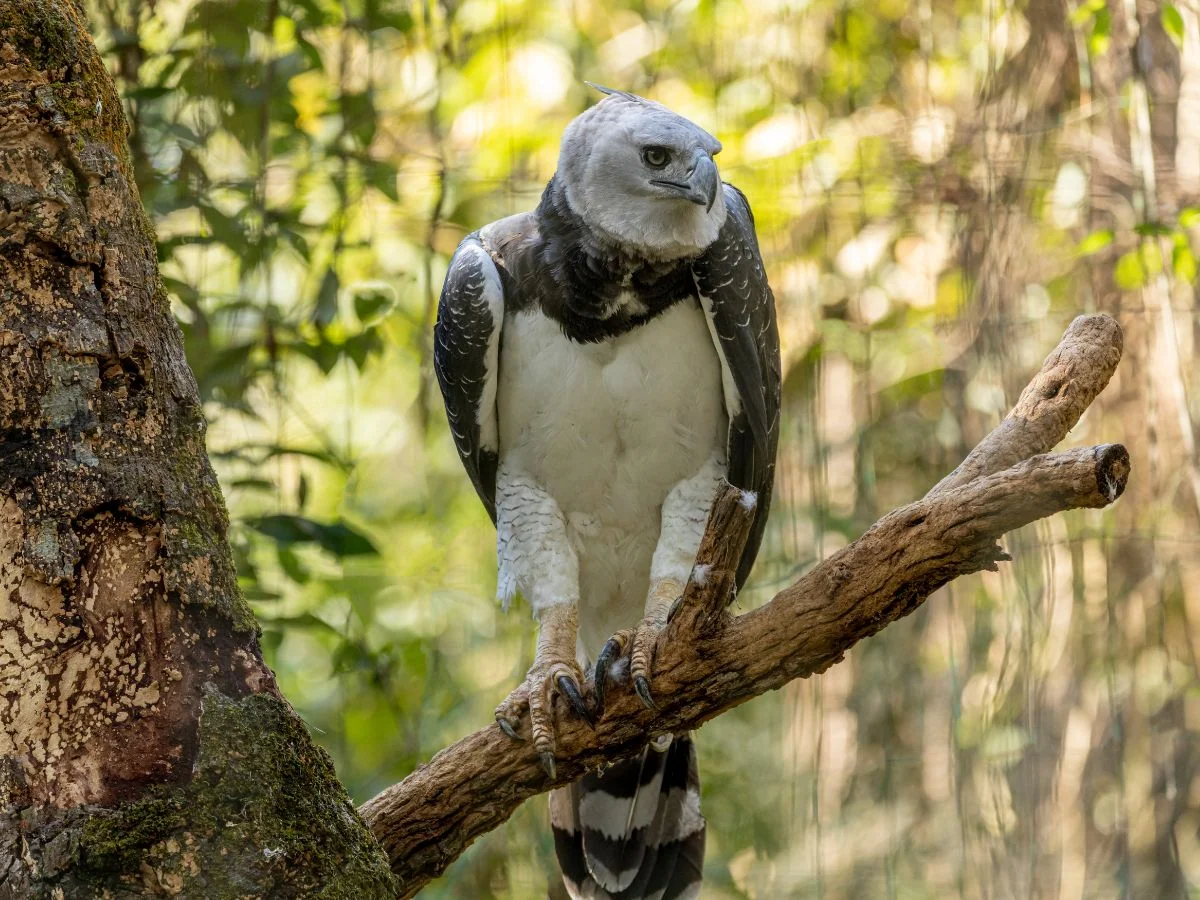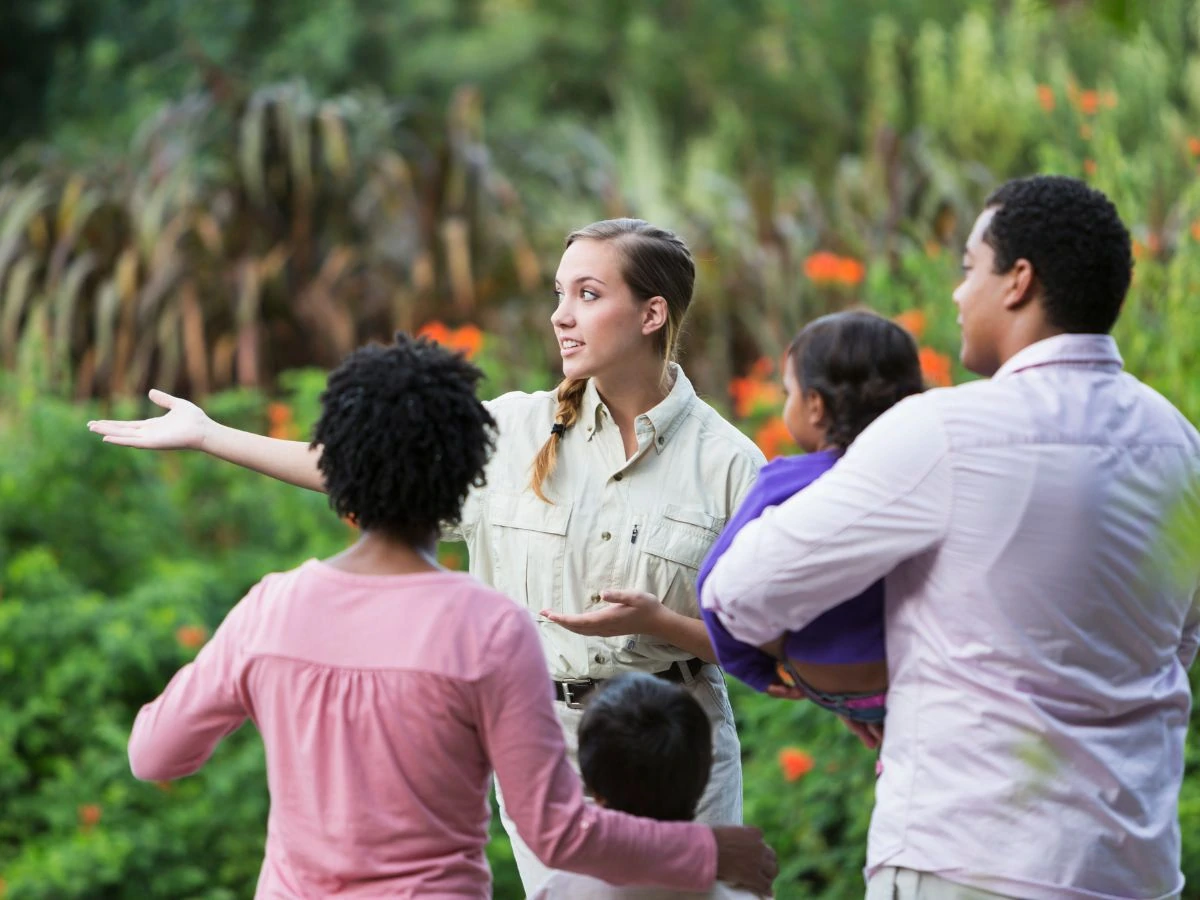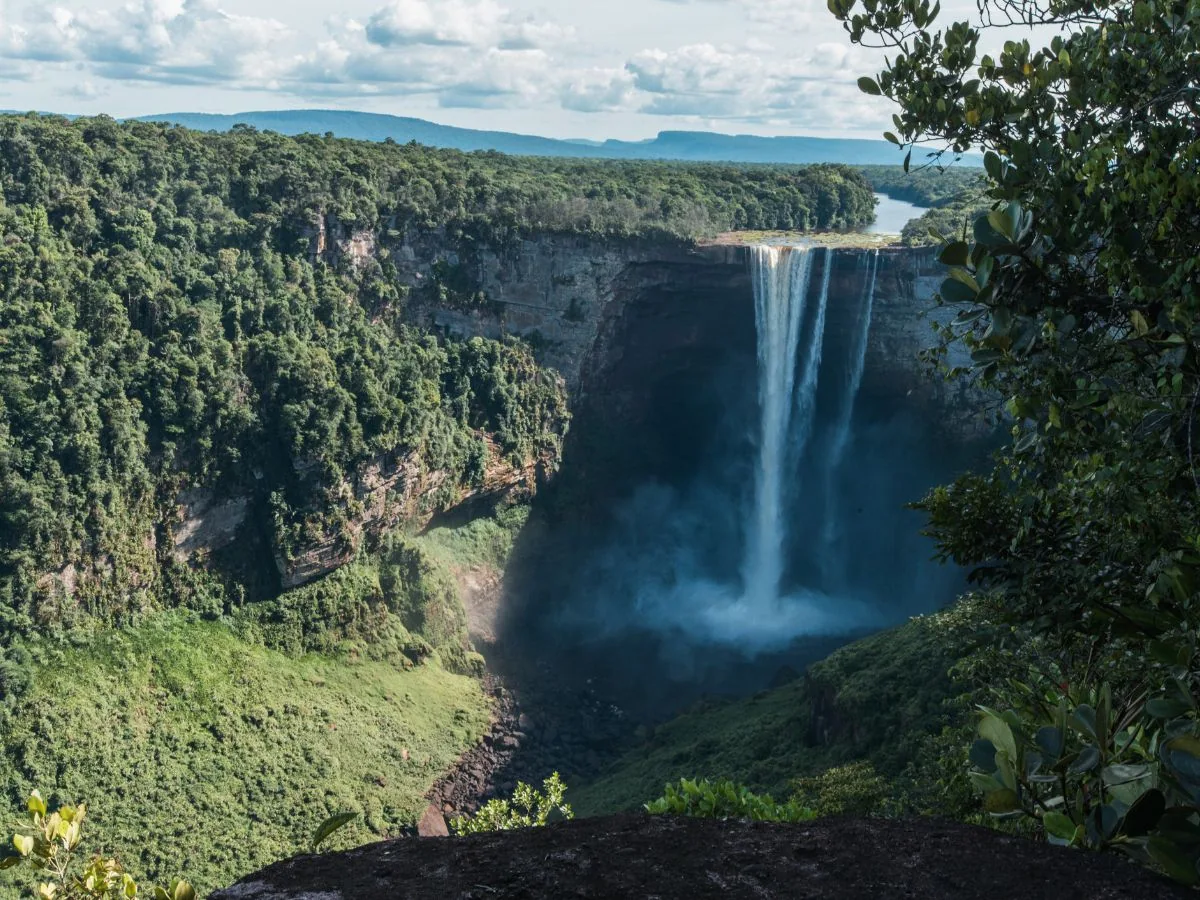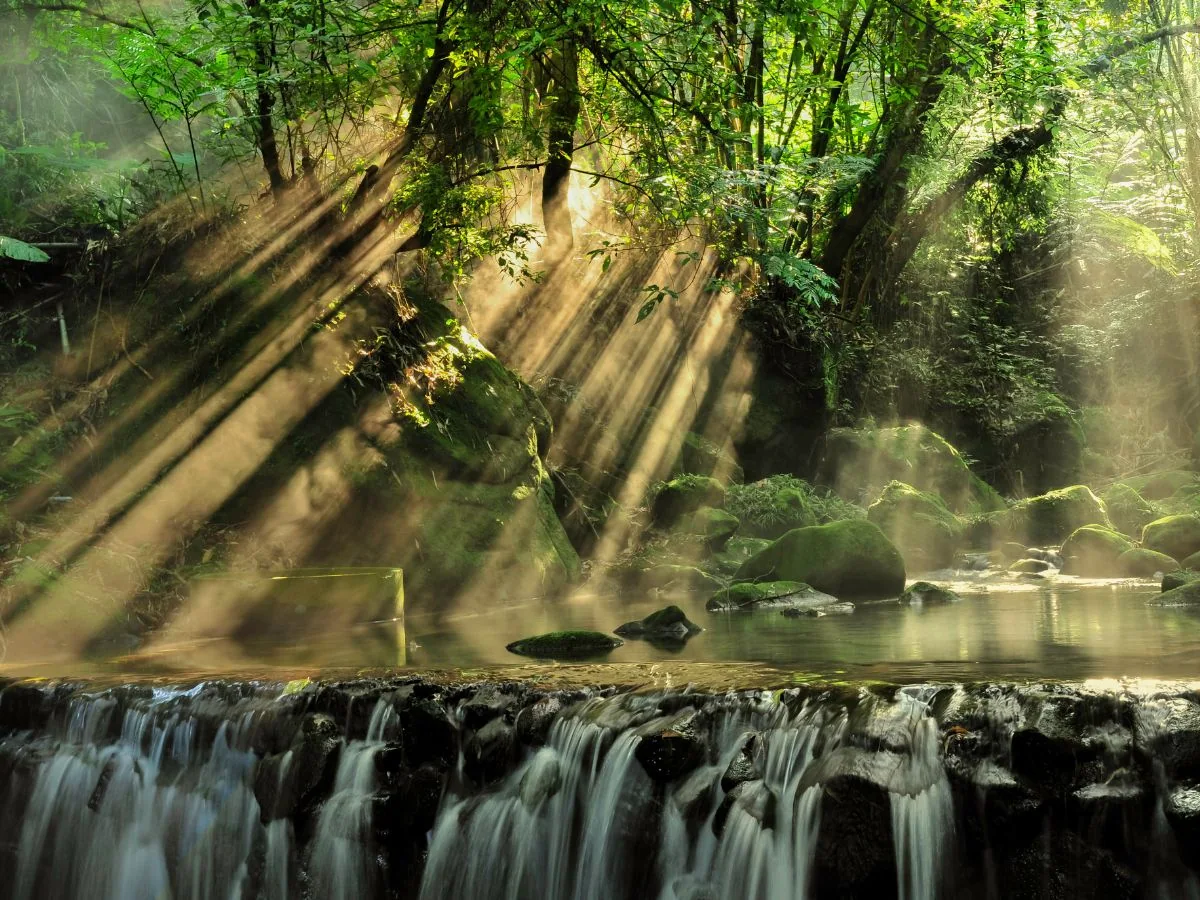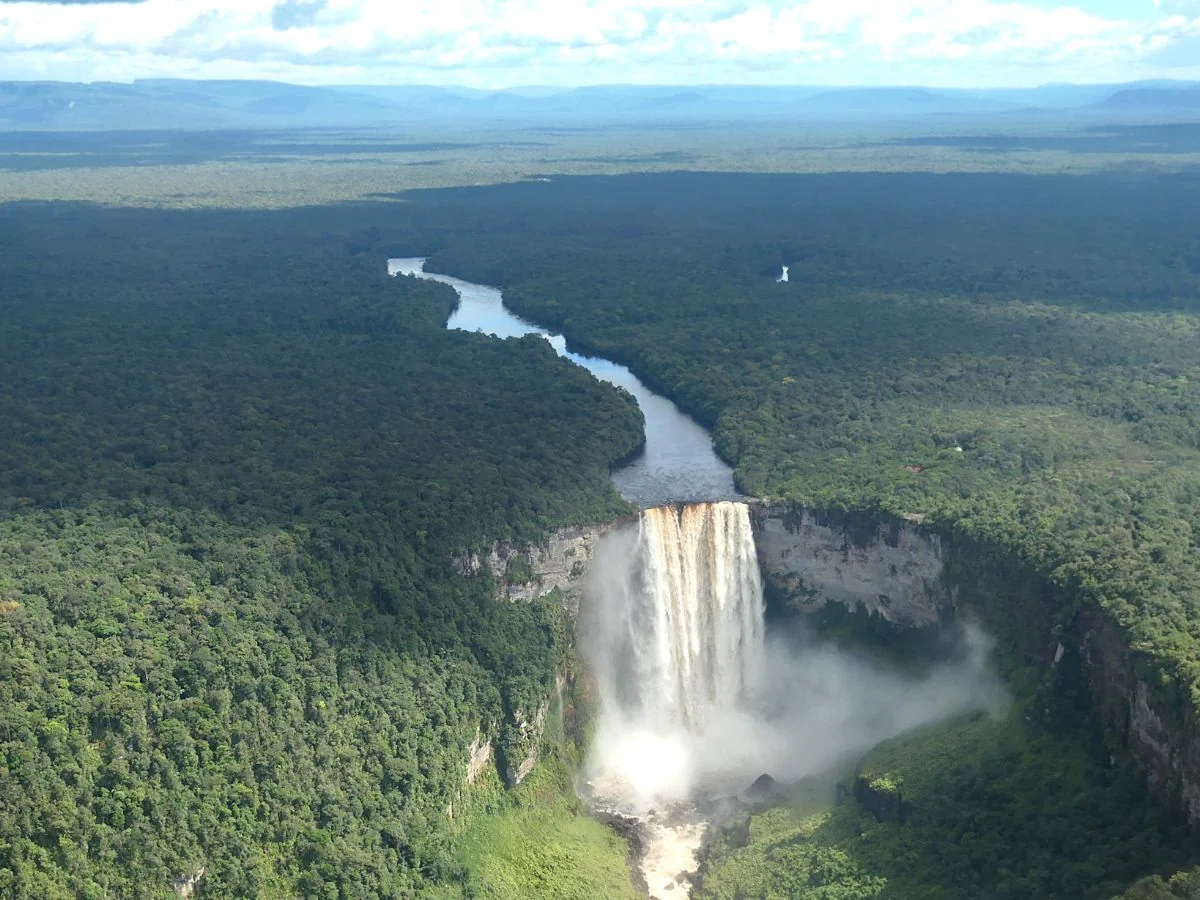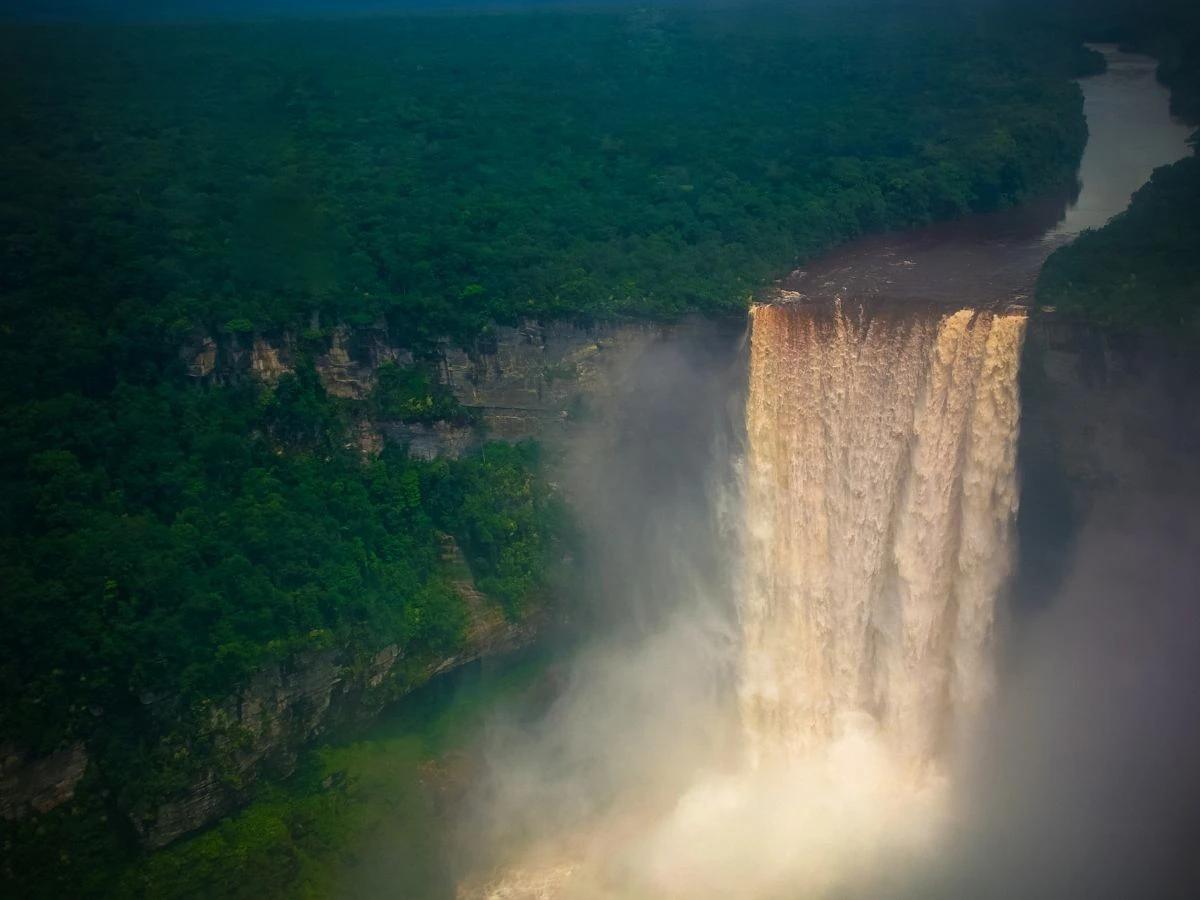Picture this: dawn breaks over Guyana’s ancient rainforest, and the haunting calls of the Guianan Cock-of-the-Rock echo through mist-covered canopy. Your small group of fellow birders moves quietly along forest trails, binoculars ready, as your expert guide points out movement in the understory. This is birding as it should be experienced – intimate, immersive, and utterly magical. During river excursions, you may even spot giant otters-rare and exciting riverine mammals that add to the thrill for wildlife enthusiasts.
Guyana remains South America’s best-kept birding secret, home to over 800 bird species including 47 remarkable Guiana Shield endemics found nowhere else on Earth. Whilst neighbouring countries draw crowds of tourists, this English-speaking nation offers pristine wilderness where jaguars still roam and Harpy Eagles soar above untouched forest canopy.
Small group birding tours, typically limited to just 4-8 participants, represent the finest way to experience Guyana’s incredible avian diversity. Unlike larger tour groups that struggle with logistics and create disturbance, these intimate expeditions offer deeper wildlife encounters, personalised guide attention, and minimal environmental impact. Every whispered bird identification becomes a shared discovery, every rare sighting a collective triumph that bonds your group together.
From the towering trees of Iwokrama Forest to the endless grasslands of the Rupununi, small group tours unlock access to some of the world’s most sought-after bird species whilst supporting local communities and conservation efforts. This is birding at its most authentic and rewarding.
Introduction to Guyana
Nestled on the northern edge of South America, Guyana is a true paradise for birdwatchers and nature lovers seeking adventure off the beaten path. This remarkable country boasts vast stretches of unbroken tropical rainforest, sweeping savannas, and a wild Atlantic coast, creating a mosaic of habitats that support an astonishing diversity of birdlife. With over 700 recorded species, Guyana is home to some of the continent’s most iconic birds, including the dazzling Cock-of-the-Rock, the mighty Harpy Eagle, and the vibrant Sun Parakeet. The forests echo with the calls of Blue-and-yellow Macaws and the striking Red-and-green Macaw, while the endangered Red Siskin flits through the Rupununi grasslands-a rare sight for even the most seasoned birder. Guyana’s largely untouched wilderness offers an authentic birding experience, where every outing feels like a true exploration. Whether you’re scanning the canopy for elusive species or marveling at the wildlife along the Atlantic coast, Guyana stands out as a must-visit destination for anyone passionate about bird watching in South America.
Why Small Groups Make Better Bird Watching
The advantages of small group birding become apparent from the moment you step into Guyana’s wilderness. With fewer people moving through sensitive habitats, birds remain calmer and more approachable, creating opportunities for extended observations and superior photography.
Small groups also increase the chances of encountering such species-rare or restricted-range birds that are a highlight of Guyana birding tours.
Enhanced Wildlife Encounters
Small groups naturally create less noise and disturbance, which proves crucial when seeking elusive forest species. Birds that might flee from larger parties often continue their natural behaviours around 4-6 quiet observers. This means longer viewing opportunities, better chances of witnessing feeding or courtship displays, and those magical moments when a Crimson Fruitcrow lands mere metres away. Minimizing disturbance not only benefits target birds but also increases the likelihood of observing other species that might otherwise remain hidden.
The reduced group size also allows for optimal positioning at key birding locations. Everyone gets front-row access to telescope views, prime photography spots, and the best vantage points at bird leks where species like the spectacular Guianan Cock-of-the-Rock perform their elaborate mating dances.
Personalised Guide Attention
With small groups, your expert guide can focus on each participant’s individual needs and interests. Whether you’re a keen photographer seeking the perfect shot of a Blood-coloured Woodpecker or a listing enthusiast determined to spot your first Harpy Eagle, guides can tailor the experience accordingly.
This personalised attention proves invaluable for birders of different skill levels. Beginners receive patient instruction in bird identification techniques, whilst experienced birders benefit from in-depth discussions about behaviour, ecology, and conservation status. Questions receive immediate answers, and every group member develops their birding skills throughout the journey.
Flexibility and Spontaneity
Small groups move with remarkable agility, adapting quickly to unexpected opportunities. When someone spots a rare Rufous Crab Hawk or hears the distinctive call of a White-winged Potoo, the entire group can respond immediately without complex logistics or delayed decision-making.
This flexibility extends to daily schedules. Productive birding locations warrant extended visits, whilst areas with limited activity can be left behind quickly. Early morning starts for dawn chorus and late evening searches for nightjars become effortless group decisions rather than complicated negotiations.
Guyana’s Remarkable Birding Destinations
Guyana’s diverse habitats support an extraordinary array of bird species, from rainforest specialists to savannah endemics. The grasslands of the Rupununi and the surrounding savanna create a unique birding environment, supporting species specially adapted to open grasslands. Small group tours access the finest birding locations whilst maintaining the intimate atmosphere that makes every sighting special.
Iwokrama Forest Reserve and Atta Rainforest Lodge
This pristine rainforest represents one of South America’s most important conservation areas, protecting over one million acres of untouched wilderness. The famous Iwokrama Canopy Walkway, suspended 30 metres above the forest floor, provides unparalleled access to the canopy layer where many species spend their entire lives.
Iwokrama harbours some of Guyana’s most sought-after species. Harpy Eagles nest in the forest’s giant trees, though sightings require considerable luck and local knowledge. More reliable targets include the elegant Guianan Trogon with its brilliant yellow belly, the secretive White-plumed Antbird that follows army ant swarms, and the bizarre Capuchinbird whose mechanical calls echo through the forest.
In addition to these, Iwokrama is home to a remarkable diversity of restricted-range and rare birds such as the red fan parrot, capped heron, green and rufous kingfisher, ferruginous pygmy owl, red necked woodpeckers, pale legged hornero, rufous winged ground cuckoo, white bellied piculet, red and black grosbeak, dusky parrots, green aracari, and the dazzling crimson topaz. Fruiting trees throughout the reserve act as hotspots for parrot and cotinga activity, drawing in flocks and providing excellent birding opportunities. The presence of white sand forest within or near Iwokrama adds to the habitat diversity, supporting specialized and endemic bird species not found elsewhere.
Night birding at Iwokrama reveals another world entirely. Several potoo species inhabit the reserve, including the rare White-winged Potoo that poses motionless on tree stumps. Great Horned Owls and Spectacled Owls hunt along forest edges, whilst the haunting calls of tinamous drift from the understory.
Rupununi Savannah
The vast Rupununi grasslands stretch endlessly toward distant mountains, creating habitat for species found nowhere else in Guyana. This region holds critical importance for two of South America’s most endangered birds: the Red Siskin and Sun Parakeet.
Red Siskins, once common across northern South America, now survive in scattered populations threatened by the illegal cage bird trade. Guyana’s Rupununi represents one of their last strongholds, where small flocks still feed on grass seeds in remote areas. Spotting these crimson jewels requires patience and expert local knowledge, but successful encounters rank among birding’s most rewarding experiences.
The savannah also supports unique grassland specialists like the Double-striped Thick-knee, a large shorebird that inhabits dry grasslands far from water. Bearded Tachuri, tiny flycatchers that perch on grass stems, and various seed-eating species complete the grassland assemblage. Notable savanna birds include long winged harrier, yellow headed caracaras, wedge tailed grass finch, crested bobwhite, and yellow hooded blackbird. In certain areas, birders may observe up to five species of grassland specialists in a single outing. Blue-and-yellow Macaws nest in scattered palm groves, creating spectacular flyovers at dawn and dusk.
Kaieteur Falls Region
Kaieteur Falls plunges 226 metres in a single drop, making it the world’s largest single-drop waterfall by volume. Beyond its spectacular scenery, the falls region harbours unique species adapted to this misty, high-altitude environment.
The endemic Golden Rocket Frog lives exclusively on the Kaieteur Plateau, one of the world’s most range-restricted amphibians. The surrounding forests host displaying Guianan Cock-of-the-Rock, whose brilliant orange plumage contrasts dramatically with the falls’ white waters. The constant mist and spray create ideal conditions for certain plant species, which in turn support specialised bird communities.
Birders visiting the rainforest around Kaieteur Falls may also encounter the gray winged trumpeter, a highly sought-after and distinctive species that adds to the region’s appeal for specialized birdwatching tours.
Accommodations and Eco-Lodges
Guyana’s eco-lodges are more than just places to rest-they are gateways to some of the best birding in South America. Thoughtfully designed to blend comfort with immersion in nature, these lodges offer birders the chance to wake up to the sounds of the rainforest and step straight into world-class bird watching. Atta Rainforest Lodge, for example, is renowned for its proximity to the famous canopy walkway, where guests can observe canopy species like the Guianan Puffbird and Spangled Cotinga at eye level. Iwokrama River Lodge sits on the banks of a pristine river, providing easy access to both forest trails and riverine habitats teeming with birdlife. Surama Eco Lodge, nestled in the heart of indigenous Makushi territory, offers not only excellent birding but also a unique cultural experience. Many of these eco lodges work closely with local communities, supporting conservation initiatives and sustainable tourism. Whether you prefer a rustic adventure or a more luxurious retreat, Guyana’s accommodations ensure that every birder enjoys a memorable stay, with exceptional access to the country’s most sought-after species and habitats.
Target Species and Seasonal Highlights
Guyana’s bird list reads like a wish list for serious birders, combining widespread Neotropical species with highly localised endemics that draw visitors from around the world. Among the visually striking birds that attract birders to Guyana is the yellow oriole, known for its vibrant plumage and regional significance.
Guiana Shield Endemics
The ancient Guiana Shield supports 47 endemic bird species, many of which remain poorly known to science. The magnificent Guianan Cock-of-the-Rock tops most birders’ wish lists, with males performing elaborate courtship displays at traditional lek sites. These orange-plumed beauties clear small areas of forest floor where they bounce, call, and compete for female attention.
Guianan Red Cotinga, another stunning endemic, inhabits the forest canopy where males display their brilliant red plumage against green foliage. Blood-coloured Woodpecker, despite its dramatic name, shows beautiful rose-red colouring on head and breast. The bizarre Rufous Crab Hawk, as its name suggests, specialises in hunting freshwater crabs along forest streams.
Among the rarer and more range-restricted species is the southern white fringed antwren, which can be found in specific forest habitats and is highly sought after by birders interested in endemics.
Crimson Fruitcrow represents one of the region’s most spectacular birds, with males sporting entirely crimson plumage and distinctive calls that carry for kilometres. The strange Capuchinbird, resembling a feathered monk, performs at communal leks where multiple males call in unison.
Endangered Specialities: Harpy Eagle
Several of Guyana’s most prized species face serious conservation challenges, making successful sightings particularly meaningful. Red Siskin populations have crashed throughout their range due to capture for the cage bird trade, but Guyana’s remote populations offer hope for the species’ survival.
Sun Parakeets, blazing yellow-orange birds that travel in noisy flocks, similarly face pressure from habitat loss and capture. Guyana’s populations remain relatively stable, particularly in protected areas like the Rupununi. These magnificent parakeets often feed in flowering trees, creating spectacular photographic opportunities.
Red and green macaws are also iconic highlights for birders visiting Guyana, with their vibrant plumage and impressive size making them a must-see among the country’s notable parrot species.
Harpy Eagles, whilst not endemic to Guyana, reach their highest densities in the country’s vast forests. These powerful raptors require enormous territories and nest in the forest’s tallest trees. Local guides maintain knowledge of active nest sites, though viewing always depends on the eagles’ movements and behaviour.
Best Timing for Different Species
Guyana’s tropical climate means excellent birding year-round, but timing can influence which species you encounter. The dry season, running from September through April, provides easier access to remote locations and more comfortable birding conditions.
Many species breed during the dry season, making this period ideal for observing courtship displays and lek activity. Guianan Cock-of-the-Rock males display most actively from December through March, whilst various cotinga species also peak during these months. Nightbird activity is also notable during evening outings, with the white tailed nightjar being a key nocturnal species that can be observed.
The wet season brings different opportunities, with some species more active during rains. Certain insects emerge only during wet periods, attracting specialised insectivorous birds. River levels rise, concentrating fish and attracting kingfishers, herons, and other waterbirds to predictable locations.
Tour Itinerary and Planning
A well-crafted Guyana birding tour is designed to make the most of every moment in this bird-rich country. Most itineraries begin in Georgetown, where the city’s botanical gardens and nearby wetlands offer a taste of Guyana’s avian diversity-look out for specialties like the Blood-colored Woodpecker and the elusive Rufous Crab Hawk. From there, the adventure moves inland, with visits to legendary sites such as Kaieteur Falls, the Iwokrama River, and the vast Rupununi savannas. Each day typically starts with morning birding excursions-often before an early breakfast-when the forest is alive with activity. After a midday break, afternoons are spent exploring forest trails, searching for target species like the Sun Parakeet and the endangered Red Siskin, or scanning the savanna for raptors and grassland birds. The itinerary is carefully balanced to cover a range of habitats, from dense rainforest to open savanna, ensuring a comprehensive Guyana birding experience. With expert local guides leading the way, participants can expect not only to see a remarkable variety of birds but also to gain a deeper understanding of the ecosystems that support them.
Expert Local Guides and Cultural Connections
Small group birding tours in Guyana benefit enormously from expert local guides whose intimate knowledge of their homeland creates encounters impossible to achieve independently.
Indigenous Knowledge
Many of Guyana’s finest birding guides come from indigenous communities, particularly the Makushi people of the Rupununi region. These guides possess traditional ecological knowledge passed down through generations, understanding bird behaviour, habitat preferences, and seasonal patterns with remarkable accuracy.
Indigenous guides often know individual trees where certain species nest year after year, secret locations where rare birds gather, and subtle signs that indicate species presence. Their ability to locate birds by sound alone, then guide visitors to perfect viewing positions, transforms birding from random searching into strategic wildlife encounters.
Working with indigenous guides also provides cultural insights that enrich the birding experience. Learning traditional names for bird species, understanding their role in local folklore, and hearing stories about human-wildlife relationships adds depth to every sighting.
Conservation Impact
Small group birding tourism creates direct economic incentives for conservation whilst supporting local communities. Guide fees, lodge payments, and related services provide sustainable income alternatives to activities that might threaten bird habitats.
Many birding tours contribute to ongoing research and monitoring efforts. Guides maintain detailed sighting records that help scientists track population trends and distribution changes. Tourists often participate in citizen science projects, contributing photographs and observations to important databases.
The low-impact nature of small group birding aligns perfectly with conservation goals. Unlike mass tourism that can disturb sensitive species and damage habitats, small groups create minimal impact whilst generating maximum economic benefit for local communities.
Practical Considerations for Small Group Tours
Successful small group birding requires understanding both the practical aspects of travelling in Guyana and the social dynamics that make group birding enjoyable for everyone. In addition to the main target species, participants can expect to see a wide variety of other birds across diverse habitats such as rivers, mangroves, rainforests, and savannas.
Group Dynamics and Etiquette
Small group birding works best when participants understand basic courtesy and cooperation. Sharing telescope time ensures everyone enjoys quality views of distant or small species. Taking turns at prime viewing positions, particularly at bird leks or feeding trees, prevents crowding and maintains the peaceful atmosphere that birds require.
Communication proves vital in group birding. Quiet alerts about bird movements help everyone stay informed without creating disturbance. Learning to give clear directions and listen carefully to guides ensures no one misses important sightings.
Respecting different skill levels enhances the experience for everyone. Experienced birders can share knowledge with beginners, whilst newcomers often spot birds that veterans overlook through familiarity. This mutual learning creates bonds that extend well beyond the tour itself.
Physical Requirements and Accessibility
Birding in Guyana requires moderate fitness levels but rewards visitors with encounters impossible elsewhere. Forest trails range from boardwalks through swampy areas to steep paths leading to canopy viewing platforms. Most walking occurs at slow speeds with frequent stops, making tours accessible to reasonably fit individuals of all ages.
Tropical conditions demand preparation and adaptation. High humidity levels throughout the year mean lightweight, breathable clothing proves essential. Waterproof gear protects against sudden tropical downpours, whilst sturdy walking boots provide security on muddy trails.
Accommodation in remote birding areas tends toward the basic but comfortable end of the spectrum. Eco-lodges prioritise location and sustainability over luxury amenities. Shared bathroom facilities are common, though private rooms remain standard. The focus stays firmly on the incredible birding opportunities rather than five-star comfort.
Photography and Equipment
Rainforest birding presents unique challenges for photographers, but small groups create ideal conditions for capturing memorable images. Reduced disturbance means birds tolerate closer approaches, whilst expert guides position groups for optimal lighting and backgrounds.
Protecting camera equipment in humid tropical conditions requires planning. Silica gel packets help control moisture, whilst waterproof camera bags prove essential during river crossings and sudden downpours. Long lenses work best for forest birding, though wide-angle lenses capture spectacular habitat shots.
Group photography etiquette ensures everyone enjoys photographic opportunities. Taking turns at the best positions, avoiding sudden movements that might disturb subjects, and sharing information about camera settings helps everyone improve their results. Many lifelong friendships begin through shared photographic interests during small group tours.
Safety and Emergency Procedures
Your safety is a top priority on any Guyana birding tour, and experienced operators take every precaution to ensure a secure and enjoyable adventure. Local guides are trained in first aid and equipped with emergency communication devices, so help is always within reach, even in remote areas. Comprehensive safety protocols are in place, including clear evacuation procedures and access to medical facilities if needed. Whether you’re traversing the forest floor, ascending the canopy walkway, or embarking on a boat ride along the river, guides provide expert advice and support every step of the way. Participants are encouraged to take sensible precautions-wearing protective clothing, using insect repellent, and staying hydrated-to minimize risks and maximize comfort. With careful planning, reliable equipment, and a focus on group well-being, you can immerse yourself in Guyana’s spectacular birding with confidence, knowing that your safety is always at the forefront of the experience.
Conclusion
Small group Guyana birding tours offer transformative experiences that linger in memory long after returning home. From the ethereal dawn chorus in pristine rainforests to heart-stopping encounters with endangered Red Siskins, these intimate expeditions create connections between people, places, and wildlife that mass tourism simply cannot match.
The personal relationships formed during small group tours – with fellow birders who share your passion, with expert guides who open their homeland’s secrets, and with local communities who benefit from sustainable tourism – enrich the experience immeasurably. Every shared sighting becomes a treasured memory, every successful species search a collective triumph that bonds the group together.
Beyond personal rewards, small group birding tourism supports vital conservation efforts and provides sustainable livelihoods for local communities. Your participation directly contributes to habitat protection whilst demonstrating that intact ecosystems hold greater value than short-term exploitation.
Guyana’s remarkable birds await discovery in one of the world’s last great wilderness areas. The intimate scale of small group tours ensures you’ll experience this natural treasure as it deserves – quietly, respectfully, and with the expert guidance needed to unlock its greatest secrets. Your Guyana birding adventure represents more than just a holiday; it’s an investment in conservation, community, and memories that will inspire you for years to come.
With over 20 years of expertise in crafting immersive travel experiences, Undiscovered Destinations invites you to explore Guyana’s rich avian diversity. Join their small group birding adventure, designed to transform your perception of the natural world. Guided by seasoned experts, you’ll delve into one of Earth’s last great wilderness treasures, leaving you eager to return even before your journey concludes. Contact us today to begin planning your intimate encounter with Guyana’s hidden gems.
